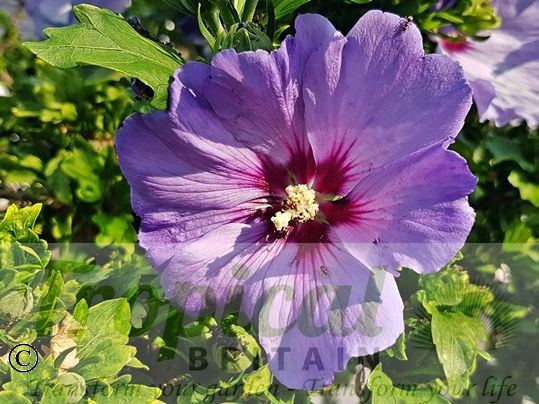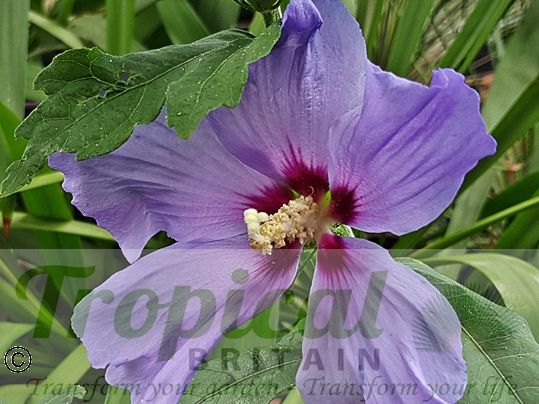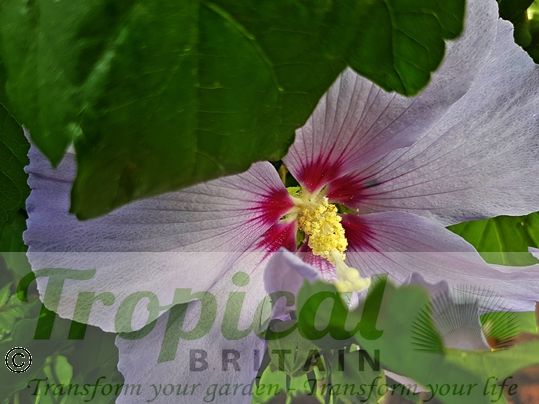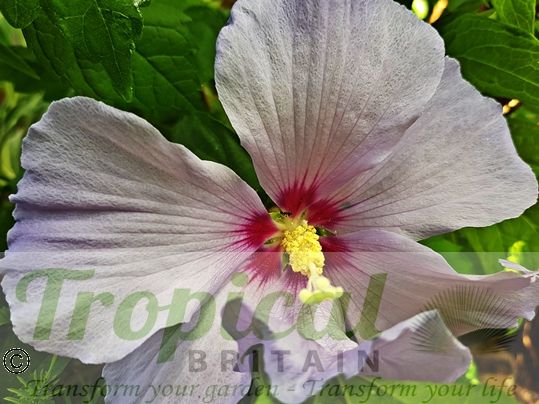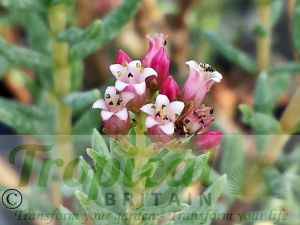Hibiscus syriacus 'Blue Bird' or 'Oiseux Bleu' as it is sometimes called, is, in my opinion, the finest of all the Rose of Sharon cultivars. A stunning lavender-blue with a deep cerise centre, the flowers are produced in succession from July through to autumn. The foliage is large and lobed and often doesn't appear until late Spring. Although fully hardy, Hibiscus syriacus 'Blue Bird', should be fleeced if a late frost is forecast. Frost damage to young leaf growth or developing buds will set the plant back at least a month and can easily be avoided by simply covering the plant.
Tolerant of a wide range of soils, Hibiscus syriacus 'Blue Bird' does best in a fertile, well-drained soil and although it appreciates plenty of watering and feeding during the growing season, it is tolerant of drought conditions.
Stunningly beautiful, exotic yet hardy, Hibiscus syriacus 'Blue Bird' is a real winner in the exotic garden.
Additional Information
| Order | Malvales |
|---|---|
| Family | Malvaceae |
| Sub-Family | Malvoideae |
| Synonyms | Hibiscus syriacus 'Oiseau Bleu', Althaea frutex, Hibiscus arborescens, Hibiscus chinensis, Hibiscus floridus, Hibiscus rhombifolius, Hibiscus syriacus var. micranthus, Hibiscus syriacus var. syriacus, Ketmia arborea, Ketmia syriaca, Ketmia syrorum |
| Geographical Origin | Horticultural cultivar. Type species from Asia |
| Cultivation | Full sun. Fertile, well-drained soil, Warm, sheltered, sunny location. Water well throughout the summer and apply liquid fertiliser. Prune to shape |
| Eventual Height | 3m |
| Eventual Spread | 2m |
| Hardiness | Hardy. Deciduous. Protect new growth from late frosts |

Free DELIVERY
ON ALL ORDERS OVER £99THIS OFFER IS VALID ON ALL OUR STORE ITEMS.

